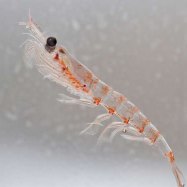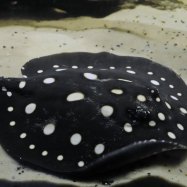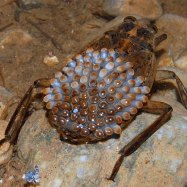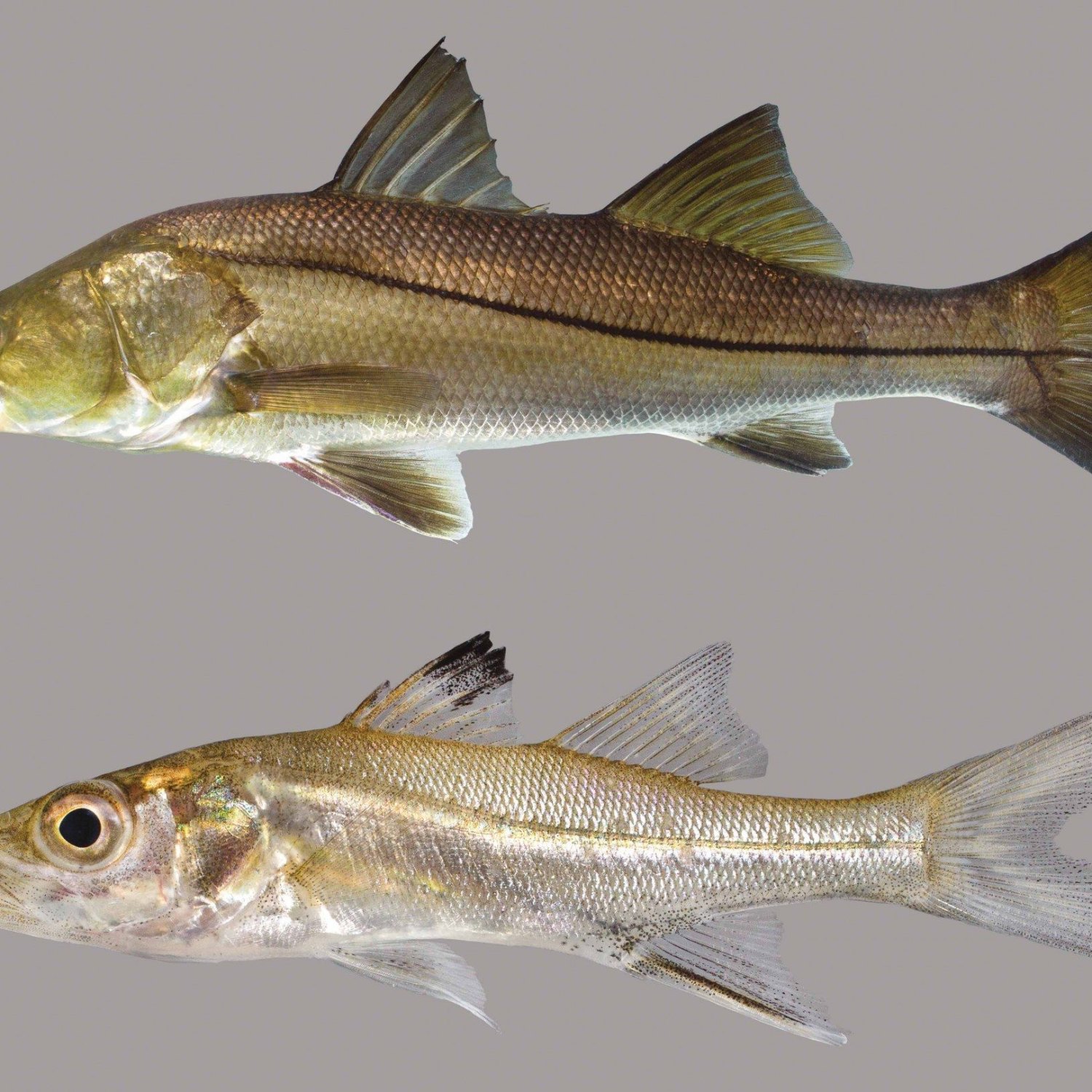
Snook Fish
Up to 48 inches (122 cm)
Snook fish are popular game fish found in the coastal regions of the Americas. With a maximum length of 48 inches, this slender and elongated fish belongs to the Centropomidae family. It's a perfect catch for anglers and a must-try for seafood lovers. Keep your eyes open while fishing in the coastal areas, you might just spot a majestic snook fish! #SNOOKFISH #SEAFOODLOVERS #ANGLERS
Animal Details Summary:
Common Name: Snook Fish
Kingdom: Animalia
Habitat: Coastal waters, estuaries, mangroves, and freshwater rivers
The Enigmatic Snook Fish: One of the Most Fascinating Predators in the Americas
Imagine walking along the mesmerizing beaches of South Florida, enjoying the warm sun and the gentle waves, and suddenly spotting a shimmering fish emerging out of the crystal-clear water, and making a loud splash. You would probably take a few minutes to admire its magnificent size and the graceful movements of its slender body before realizing that you have just witnessed the incredible snook fish in its natural habitat.The snook fish, scientifically known as Centropomus undecimalis, is a predatory fish found along the Atlantic coast of the Americas, from South Carolina to Brazil. Its common name, "snook," is derived from the Dutch word "snoek," meaning pike, due to its elongated body shape and predator nature Snook Fish. This enigmatic fish belongs to the kingdom Animalia, phylum Chordata, class Actinopterygii, order Perciformes, and family Centropomidae. Let's dive into the fascinating life of snook fish and discover what makes them one of the most intriguing and captivating creatures in the Americas.
The Habitat of Snook Fish
Snook fish are widely distributed throughout the coastal waters, estuaries, mangroves, and freshwater rivers of the Americas. They are highly adaptable and can survive in a wide range of environments, from freshwater to highly saline waters. This flexibility in their habitat preferences enables them to thrive in various conditions, making them a significant component of many coastal ecosystems.One of the most unique aspects of snook fish is their ability to enter freshwater rivers for spawning. They migrate to these freshwater environments during the peak rainy season, creating a jaw-dropping spectacle for anyone lucky enough to witness it. This behavior is a testament to their primal instincts and highlights their importance as a keystone species in maintaining the balance of coastal ecosystems.
The Feeding Method of Snook Fish
Snook fish are strict predators, with a voracious appetite and an essential role in the food web of their habitats Southern House Spider. They have an impressive set of teeth and a mouth designed for catching and consuming their prey. They are opportunistic feeders, and their diet varies depending on their size, location, and availability of their prey items.Young snook fish primarily feed on small crustaceans, insects, and smaller fish, while adult snook fish prey on larger fish, mollusks, and crustaceans. They use their elongated and streamlined body to ambush and capture their prey, making them one of the most skilled predators in the Americas. Snook fish are also known for their impressive and acrobatic jumps, adding to their already impressive predatory skills.
The Geographical Distribution and Origin of Snook Fish
Snook fish are native to the Atlantic coast of the Americas, found in countries like the United States, Mexico, Central and South America. They prefer the tropical and subtropical waters of the Americas, and temperatures between 68-86°F (20-30°C) are ideal for their survival. Large populations of snook fish can also be found in Brazil, Costa Rica, Nicaragua, and Panama.Snook fish have been an essential part of the cultural and economic history of the Americas and have been documented in ancient carvings of the Mayans and Taino indigenous peoples. They were also a vital source of food for the indigenous tribes and were highly valued for their nourishing and healing properties.
Appearance and Body Shape of Snook Fish
One of the most striking features of snook fish is their stunning silver-gray or brownish coloration on the back, with a lighter underbelly. This unique coloration is an effective camouflage system, helping them blend in with their surroundings, making them less noticeable to predators and prey alike.Snook fish have a slender, elongated, and streamlined body shape, perfectly suited for their advanced predatory skills. They have a tapered and pointed head, a long mouth, and sharp teeth, allowing them to strike swiftly and with precision. Their gills are covered with a bony plate, which serves as a defense mechanism against potential predators. Overall, snook fish have a sleek and elegant appearance, making them a sight to behold in their natural habitat.
Size and Life Cycle of Snook Fish
Snook fish are one of the largest predatory fish in the Americas, and their size can range from 10 inches (25 cm) in length, to an impressive 48 inches (122 cm). The female snook fish can grow larger than the males, with smaller females reaching sexual maturity between 1-3 years, and larger females between 4-5 years.Snook fish have a unique life cycle, with females being the primary breeders and males typically not being involved in raising the offspring. During the peak rainy season, snook fish migrate upstream into freshwater rivers to spawn. Females lay their eggs in freshwater, with the eggs hatching into larvae, which then drift downstream into coastal waters. As the larvae grow into juveniles, they make their way back into the coastal waters, where they continue to mature into adults.
Challenges Faced by Snook Fish
Despite their impressive set of skills and adaptability, snook fish face several challenges that threaten their population. Overfishing is one of the most significant threats to snook fish, with commercial and recreational fishing exerting intense pressure on their populations. Another major concern is habitat degradation, as coastal development and industrial activities harm their delicate ecosystem.To preserve the population of snook fish and maintain the balance of coastal ecosystems, various measures have been put in place. The snook fish is a highly prized game fish, and some countries have imposed catch and size limits to prevent overfishing. Additionally, regulations are in place to protect their spawning grounds, such as closed seasons and restricted access to river mouths.
The Significance of Snook Fish in Coastal Ecosystems
Snook fish have an essential role in maintaining the balance of coastal ecosystems, making them a valuable ecological indicator species. As predators, they control the population of their prey, which helps maintain a healthy and diverse marine environment. Their migratory behavior also helps to disperse new species of fish and maintain genetic diversity within the ecosystem.Furthermore, snook fish are vital for the economy, culture, and food security of the communities living along the Atlantic coast of the Americas. They provide employment opportunities for commercial and recreational fishing and contribute significantly to the tourism industry. In addition, they are a source of traditional medicine and cultural practices, making them a symbol of cultural heritage for many indigenous communities.
Conclusion
In conclusion, the snook fish, with its enigmatic nature and impressive set of skills, is undoubtedly one of the most fascinating predators in the Americas. From their stunning coloration, streamlined body shape, and predatory nature, to their unique life cycle and vital role in maintaining coastal ecosystems, snook fish never fail to captivate and mesmerize us. As a testament to their importance, various conservation efforts are in place to protect and preserve the population of this extraordinary fish, ensuring that future generations will also have the opportunity to witness its magnificence.

Snook Fish
Animal Details Snook Fish - Scientific Name: Centropomus undecimalis
- Category: Animals S
- Scientific Name: Centropomus undecimalis
- Common Name: Snook Fish
- Kingdom: Animalia
- Phylum: Chordata
- Class: Actinopterygii
- Order: Perciformes
- Family: Centropomidae
- Habitat: Coastal waters, estuaries, mangroves, and freshwater rivers
- Feeding Method: Predatory
- Geographical Distribution: Atlantic coast of the Americas, from South Carolina to Brazil
- Country of Origin: United States, Mexico, Central and South America
- Location: Coastal regions of the Americas
- Animal Coloration: Silvery-gray or brownish on the back, with a lighter underbelly
- Body Shape: Slender and elongated
- Length: Up to 48 inches (122 cm)
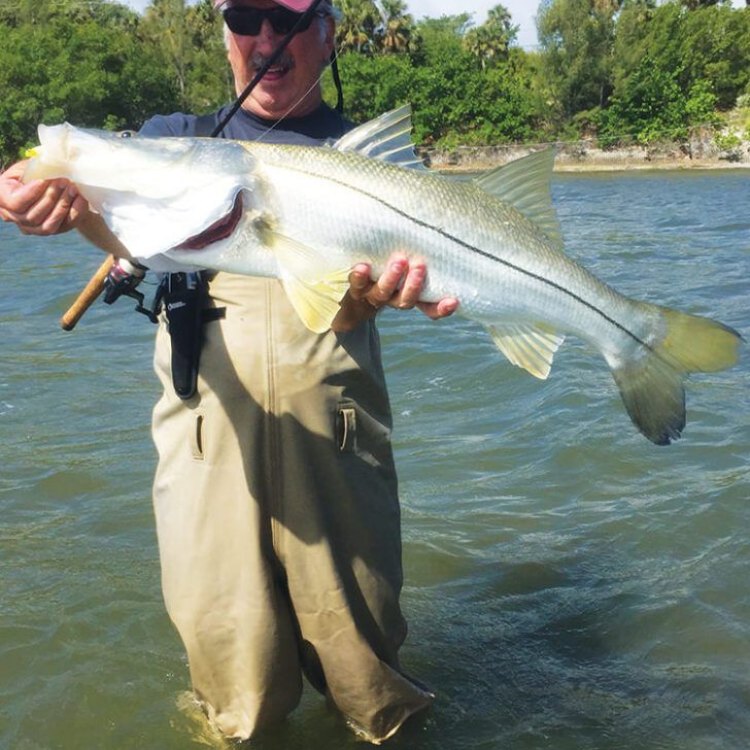
Snook Fish
- Adult Size: 30-40 inches (76-102 cm)
- Average Lifespan: 10-20 years
- Reproduction: Sexual
- Reproductive Behavior: Spawning occurs in the open ocean
- Sound or Call: Grunting sounds
- Migration Pattern: Migrate between freshwater and saltwater habitats
- Social Groups: Solitary or small groups
- Behavior: Nocturnal and opportunistic feeders
- Threats: Overfishing, habitat loss, pollution
- Conservation Status: Not assessed
- Impact on Ecosystem: Top predator in its habitat
- Human Use: Popular game fish
- Distinctive Features: Prominent lateral line and large mouth
- Interesting Facts: Can survive in freshwater for short periods of time
- Predator: Larger fish, sharks, dolphins
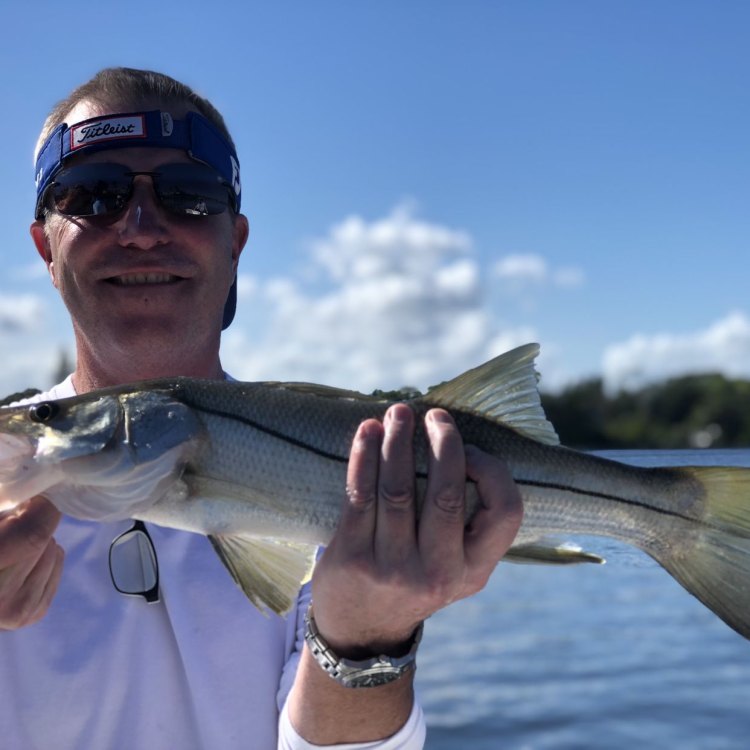
Centropomus undecimalis
The Fascinating World of the Snook Fish: A Top Predator in its Habitat
When it comes to the ocean, there are numerous species of fish that catch our attention with their unique features, behaviors, and ecological importance. The snook fish, also known by its scientific name Centropomus undecimalis, is one such fish that has captured the interest of anglers, researchers, and marine enthusiasts alike. With its distinctive appearance, behavior, and role in the ecosystem, the snook fish is truly a fascinating creature that deserves to be studied and appreciated.Native to the Atlantic coast of the Americas, ranging from southern Florida to Brazil, the snook fish belongs to the Centropomidae family, which includes several other species of snooks as well PeaceOfAnimals.Com. Known for its impressive size and strength, the adult snook fish can grow up to 30-40 inches (76-102 cm) in length and weighs an average of 15-22 pounds. These fish have an average lifespan of 10-20 years, making them a long-term resident in their habitats.
Unlike some other fish species, the snook fish has a sexual mode of reproduction, meaning they require a male and female to produce offspring. Reproduction typically occurs during the spring and summer months, and interestingly, it takes place in the open ocean instead of in smaller bodies of water like other fish. During this time, the fish will travel to offshore areas to participate in group spawning, with males and females releasing their eggs and sperm into the water simultaneously.
One of the most distinctive features of the snook fish is its grunting sound, which is produced by the active swim bladder. These grunts are often heard during mating and spawning and are also used as a form of communication among group members. However, these sounds can also serve as a warning signal for predators, as the snook fish is not immune to attacks from larger fish, sharks, and even dolphins. This constant threat of predators is one reason why the snook fish is a highly opportunistic feeder, often feeding on smaller fish, crustaceans, and even other snook fish Sarkastodon.
In terms of behavior, the snook fish is predominantly nocturnal, meaning they are most active at night. However, this doesn't mean they don't hunt during the day. The snook fish is a highly adaptable species and can adjust its feeding habits based on availability and competition for food sources. They are also known to be solitary hunters, but can occasionally be found in small groups.
As for their migratory patterns, snook fish are known for their ability to move between freshwater and saltwater habitats, earning them the nickname "linesiders." They primarily reside in coastal estuaries and mangrove forests, but will often travel to freshwater rivers and lakes to feed and seek shelter. This behavior allows them to have a diverse diet and a wide range of habitats to thrive in.
The snook fish is a top predator in its habitat, playing a crucial role in maintaining a balanced ecosystem. Their presence helps regulate the population of smaller fish, which in turn, affects the entire food chain. Without the snook fish, there would be a significant impact on the marine life in its habitat, leading to an imbalance in the ecosystem.
Unfortunately, just like many other marine creatures, the snook fish is facing threats to its survival. Overfishing, habitat loss, and pollution have significantly affected their population in recent years. Despite this, the conservation status of the snook fish has not been assessed, making it challenging to monitor and implement necessary measures for its protection. As responsible global citizens, it is crucial to be mindful of our actions and the impact they have on the environment and its inhabitants, including the snook fish.
Apart from its ecological importance, the snook fish also holds significant value for humans, as it is a popular game fish. Many anglers and fishing enthusiasts are drawn to the snook fish for its size, strength, and challenging fight. This has resulted in a significant increase in demand for snook fish, leading to overfishing and depletion of their population in certain areas. Therefore, it is essential to regulate fishing practices and limit the catch of these magnificent creatures to ensure their sustainable survival.
The snook fish also has some interesting features and behaviors that make it stand out from other fish species. For instance, they have a prominent lateral line running along their sides, which is used to detect vibrations and changes in water pressure, helping them navigate and locate prey. Their large mouth, filled with sharp teeth, is another unique feature that aids in their predatory habits.
One of the most intriguing facts about the snook fish is their ability to survive in freshwater for short periods of time. This is especially useful during the dry season when water levels decrease in their coastal habitats. The snook fish can utilize their swim bladder to absorb oxygen from the air and survive until the water levels rise again. This remarkable adaptation is essential to their survival in changing environments.
In conclusion, the snook fish is a truly remarkable creature that inhabits the coastal waters of the Americas. With its impressive size, unique features, and important role in the ecosystem, the snook fish is a top predator that deserves to be studied, protected, and appreciated. As we continue to face threats to the survival of many marine species, it is essential to raise awareness and take action to preserve these magnificent creatures for future generations to appreciate and admire. So, next time you're out by the ocean, keep an eye out for the snook fish and appreciate its place in the fascinating world of marine life.

The Enigmatic Snook Fish: One of the Most Fascinating Predators in the Americas
Disclaimer: The content provided is for informational purposes only. We cannot guarantee the accuracy of the information on this page 100%. All information provided here may change without prior notice.

